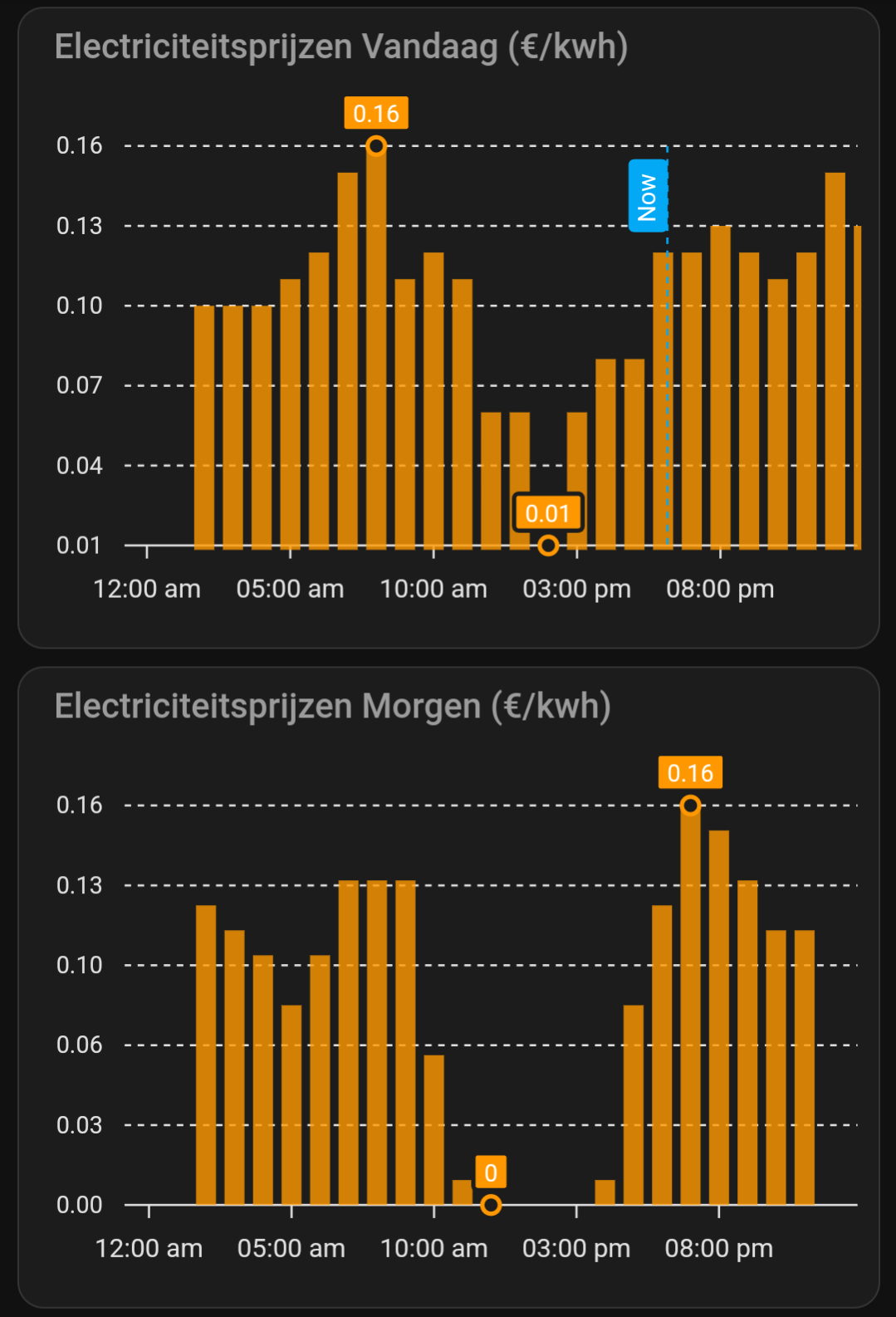My PGE bill is a little over 50c per kilowatt hour. Its starting to become like a second mortgage or car payment for some. Wondering what other people are paying for their power.
https://www.pge.com/assets/pge/docs/account/rate-plans/residential-electric-rate-plan-pricing.pdf
$0.35usd per kWh
€0.30 /kWh
about 150 per month for the whole family
15¢/kWh. Makes driving an EV really economical. I did a day trip last week and had to charge at a DC fast charge and it was 56¢/kWh. At that price it would’ve been cheaper to drive my wife’s Traverse.
eMPG is a joke measurement, miles/dollar is the real comparison.
EV driving really shines in local trips, which is the majority of most people’s driving. My husband and I have solar panels and a plug in hybrid, so his commute to work every day is essentially free for us (aside from wear and tear). If you’re regularly driving long hauls then fully EV doesn’t seem to make sense yet, but for every day driving, the trade off of having cheaper daily trips with occasional higher expenses for long hauls probably still nets a lower cost per mile.
My usual commute to work is like eight miles. I’ve considered purchasing an old leaf just to use to drive to work and back. The fact that they only get 40-100 mi round trip is negligible to the fact that I would save a decent amount of money on gas.
The trade-off turned out to be that my insurance rates and the other maintenance would more than absorb the cost savings from any gas so unless I also got rid of my primary vehicle which I’m not likely to do it would be a bad move for me.
When I first got my EV, the DC fast charge rates weren’t that high. I was seeing an average around 35 cents/kWh. A near 50% jump in price now has me planning trips in advance not for just charging stops but a cost analysis in case it’s cheaper with gas (fuck Illinois electricity rates). The plan is still to get my wife an EV when it’s time to replace the Traverse. I hope that DC rates won’t be so bad for long trips by then so I don’t have to hear about it. She’s still unconvinced despite our summer vacation being done with entirely level 2 chargers on the way down and at our destination, then 1 DC charge to get back home.
I rent a car for uber. They recently changed it so all rentals must be electric. I don’t have a way to charge at home, which means I pay 60¢/kWh to charge the car. I get about 200 miles of range for about $20.
Those who charge at home, overnight, get subsidized electricity for charging an EV, so they pay 4.2¢/kWh, or about 7% of what I pay to charge the car.
It pisses me off that this decision, to force all rental uber drivers to use EVs, was probably made by someone who lives in a house and has no idea that people who rent cars to drive uber tend to live in shitty little apartments with no at-home charging.
Not only do I pay through the nose for energy, more than I would pay for gas, I lose 1-2 hours of income per day just twiddling my thumbs in random grocery store parking lots.
And that doesn’t count the time lost driving from station to station looking for an available charger.
Renting a car to drive for uber doesn’t sound financially sustainable in the first place
In Malaysia they break it down into tariff so the more you use, your bill will spike exponentially. The rate are RM0.218/kwh for the first 200kwh, then RM0.334/kwh for 201-300kwh, then RM0.516/kwh for 301-600kwh, then RM0.546/kwh for 601-900kwh, then RM0.571/kwh for 901kwh onward.
I’m also PGE and it’s the same, about $0.50 per kWhr. I don’t even have AC, but I’m typically paying $150-$250 per month.
My AC was set at 84 and I still got a 400+ bill. Its insane. I thought at first my AC was having issues, but the guy came out and its only pulling around 3kw and its definitely working. Found out im using around the same KWH as last year (actually a bit less) but the rate hikes means we see more peaks and much higher bills.
Is it a home you own or rental? Apartment?
If it’s a single family home you should seriously consider the pricey upgrades to insulation. It could cut hundreds off your bill.
But it could also be a better investment to get solar panels in that case.
Well, California has some of the highest electricity rates in the US. IIRC the exceptions are Hawaii and Alaska.
That being said, last I looked, it was more like $0.21/kWh. Hadn’t realized that it had gotten that high.
EDIT: Here’s a per-state list for average residential prices for 2024:
https://www.usatoday.com/money/homefront/deregulated-energy/electricity-rates-by-state/
That has California at an average of 29.49 cents/kWh, which is quite high as the US goes, but not nearly as high as yours. It does say that prices went up 11% since last year.
California has had a major problem where billing just happened per kWh, so that people people who were using solar (or some other form of local generation) were basically dumping the cost of maintaining the grid connections onto people who weren’t doing local generation, since the solar users were purchasing few kWhs. This was very politically controversial, especially since the latter group was generally poorer. IIRC, California is just or will be passing policy changes that will limit that, so the kWh cost from the grid should drop, though people getting most of their power from solar will have a higher overall bill than they had; there’s a separate bill item for the grid connection and for the electricity provided over it.
https://www.sacbee.com/news/politics-government/capitol-alert/article288420595.html
Not sure when that enters or entered into force. However, it should depress per-kWh charges, though there’ll be a fixed charge for the grid connection.
Sounds like PG&E also got the go-ahead to do a bunch of underground lines and rate hikes to get customers to pay for them. I understand that buried lines are more-common in Europe – you don’t have to see power lines, but it costs more to stick 'em underground and maintain 'em, and the US typically keeps 'em aboveground, unless it’s a major urban area.
Electricity costs will get even higher for many Bay Area residents after California regulators approved the latest in a series of PG&E rate hikes at a voting meeting on Thursday.
The utility seeks to recover $943.9 million in costs related to wildfire mitigation and damages from power outages during severe storms in recent years. It asked state regulators to approve a temporary rate increase of $5.16 per month for its average customer.
It’s the third such “interim rate relief” request from PG&E within a year, according to California Public Utility Commission documents. In July 2023, regulators allowed PG&E to raise rates temporarily by an average of $10.30 and then again by around $5 a month the following March.
These smaller, temporary rate hikes are in addition to regulators’ approval of a much larger general rate adjustment proposal last year to help PG&E cover the cost of burying thousands of miles of lines underground in the most wildfire-prone parts of the state, as well as other investments.
Ratepayers saw an average increase of about $30 a month on their bills beginning this year because of that.
I don’t really care about not having lines visible, though I don’t think that people not where underground lines are should be paying for those, that it should be people in an area that want them underground to cover the cost.
It would be interesting, I think, to have a journalist go to some states with wildly-different costs and do a breakdown of why electricity in different states costs different amounts. I think that it’s pretty legitimate for someone living in a place with high utility costs to ask for and and get an explicit breakdown showing why their utility provider can’t be competitive with one in another state.
Im in Fresno…we have some of the worst economic situations of a major city in Cali. So we pay bay area prices with midwest wages.
Yeah, that does seem kind of unreasonable for Fresno. I mean, not that I think that there isn’t grounds to complain about the Bay Area being where it is either, but I get your point. Hits hard.
I’m not gonna ask whether you qualify, doesn’t matter for the standpoint of this discussion, but if you’re not aware, California has been pretty gung-ho on some low-income household utility subsidy programs; some of those have gone through recently. If you do qualify, hope that might help.
That program is closed now unfortunately. So many people tried to jump on that it was quickly overwhelmed from what I saw on the news.
I agree, its unfair for the bay AND the central valley. Given that PGE has had record profits year after year lately doesn’t make me feel any better…
At this point im getting solar out of spite.
At this point im getting solar out of spite.
Aight, and seems like a legit thing to look into, but I’d run the numbers on 'em first. Especially given that they’ve got the grid connection fee coming or present, it will make solar less-favorable than it had been in some recent years, and a lot of companies went up to homeowners and told 'em “I’ve got a great investment for you” that didn’t always turn out to be quite as good an idea as some people hoped.
-
You’ve got the time value of money. So if you’re buying a ton of hardware up front, that’s money that’s either you aren’t earning a return on or money that you’re borrowing and paying interest for.
-
The panels and batteries do not last forever. You’re getting N years of service out of them, even if nothing breaks.
You might also want to price insulation costs of various things on your place. Like, that may provide a better return. I don’t know the numbers, but windows, weatherstripping, attic, etc.
Your absolutely right. ill be looking at the numbers. But with 50c+ per kilowatt…its going to be hard NOT to make my money back.
At 50¢/kWh even adding batteries and trying to be as disconnected as (legally) possible from the grid might pay for itself!
I’m probably doing solar in spring, and I’m paying 20 cents per kwh. It’s about a 13 year breakeven time, but that works for my circumstances. I plan to be here for awhile, my roof faces the right way, and it’s a reasonable diversification of investment.
I’ll still have some dependence on the grid, especially in winter. Might pull from the grid in some early morning hours, but net metering credits should pay for that.
I consider the rising price of electricity and the capital gains from an index funds roughly a wash. It’s not, but I also don’t want 100% of my investments in the stock market, and it’s nice to do something responsible for the world.
So make sure to do your whole installation in one year. You only get to claim the 30% federal tax credit once. So don’t go small with a plan to go bigger later. I couldn’t do this without the federal credit.
-
PGE are crooks. Their entire board and execs should be in prison for the fires their failing equipment have caused and the subsequent deaths.
That said, I moved from southern California to Illinois recently. We went from 50-60 cents/kwh to something like 5 cents/kwh. I use a lot to power my servers, fans, and AC and don’t fret if my bill hits $200 a month.
It should be noted that burying lines in this case is not for aesthetic reasons, but because trees falling on/growing into above-ground lines is one of the most common causes of wildfires. Putting the lines below the ground is much safer in that respect, but it is much harder to do maintenance on the lines should something go wrong.
Most of these lines are likely in regions where almost nobody lives, but a fire started in those forests can threaten a much larger swathe of customers.
It costs less in the long run because you don’t start a forest fire that burns down half the state. Should have buried them to begin with.
$0.50 per kWh is absurd. Where we are, the power company charges $0.1065 on peak and $0.1001 off. (As in, about a dime.)
Note that this is still about 33% more than at the start of the pandemic. We were around $0.07 per kWh prior to 2021.
It varies a lot, can be as low as $110 and as much as $170. And that’s just me, a single dude in a small one bedroom apartment. It was half that just a few years ago. So painful.
Peak rate (2PM -7PM) is $0.225/kWh
Off-peak is $0.178/kWh
With my normal usage, it averages about $0.187/kWh
Factoring in all the other fees that are tacked on, mine is $0.21/kWh in OK.
Summer: $0.118 / kwh first 600kwh, $0.136 600+ Winter: $0.132 / kwh first 600kwh, $0.144 600+
I averaged the last 3 years for these.
I am in the greater Boston area and just pulled up my most recent bill. Total cost for me (including generation and delivery) came out to $0.33 per kWh. When it comes to the total cost each month, my cost goes down dramatically in the winter when the gas is used for heat instead of the electric for AC.

Dynamic pricing contract. Planning when to charge the car, running dishwasher etc is small effort.
Adding 5KW solar panels and a change of contract, from >€500 to something like €75. Family of 4, pretty heavy usage.
Is this exclusive or inclusive of the energy tax? IIRC that’s about €0.15/kWh in the Netherlands
Inclusive tax, but exclusive service fee, handling fee, network fee, administrative fee, etc. You get the picture.
We are getting screwed by the energy companies and the infrastructure companies. Everyone wants a piece of the pie.
At least (some of us) are getting money back, when your solar production exceeds your consumption. But that is going to change soon.
$0.11 Canadian/kWh, my usage is about 150kWh per person per month, but I don’t have summer AC. There’s a higher rate beyond a threshold of 675kW/h but that’s still under 15 cents. With a zero-use daily charge including municipal levies about 30 cents per day, and some fluctuations based on power sold, imported and other costs (my last bill had like $3 in credits). All in all about CA$25/mo ($18US).
Charged by BCHydro, the provincial power regulator. I’ve been really shocked at how cheap utilities are overall in BC, I budgeted about 3 times the amount I needed when I first moved.












